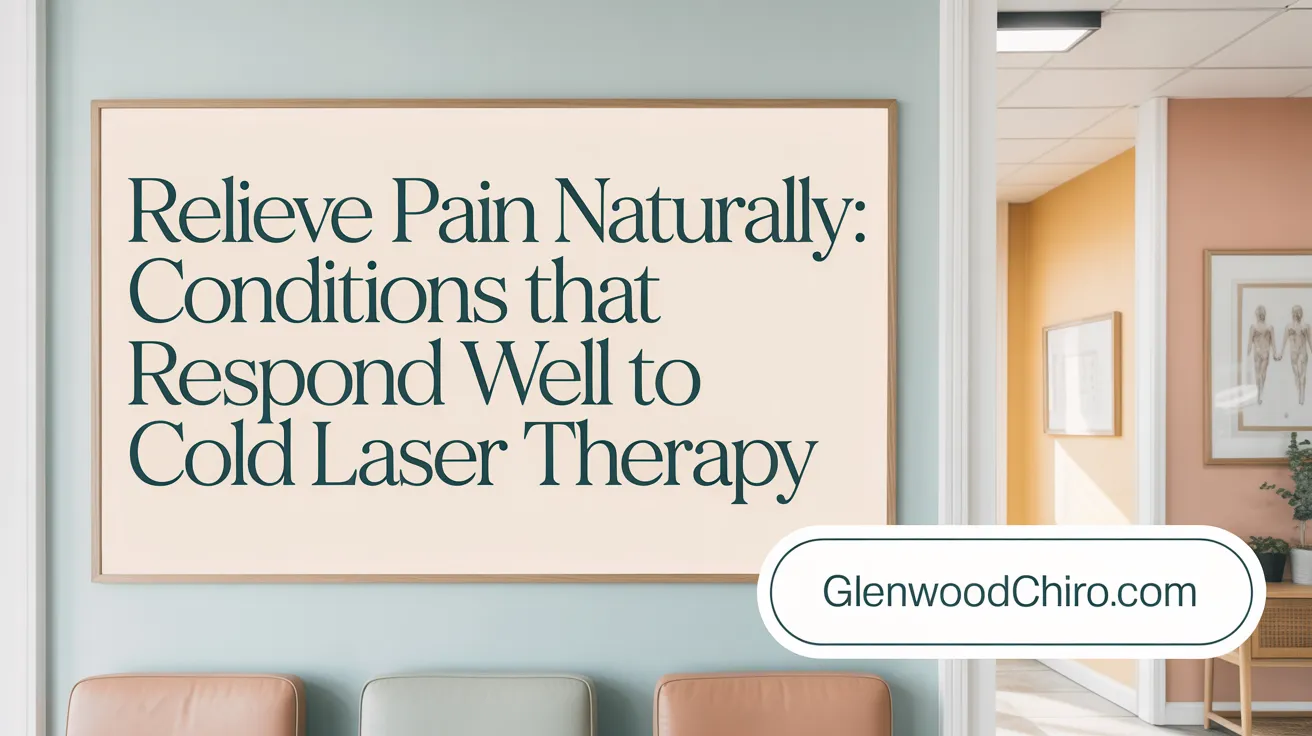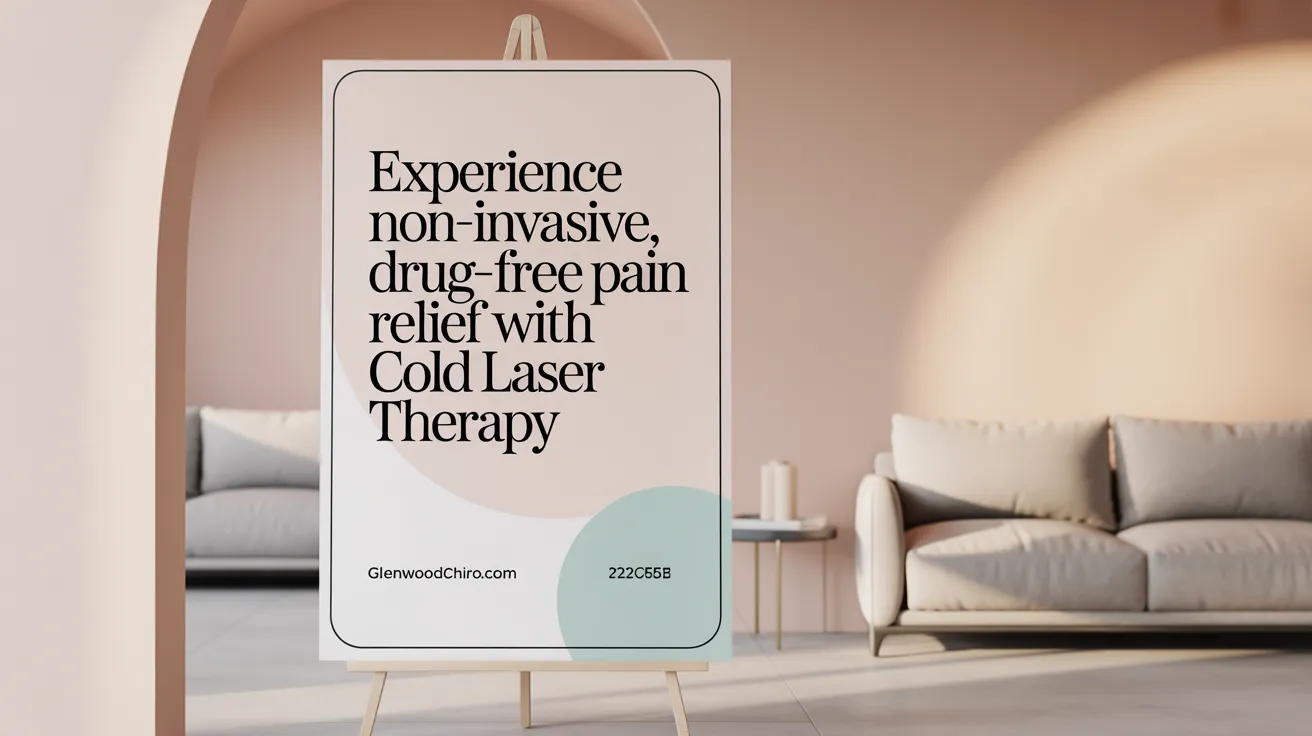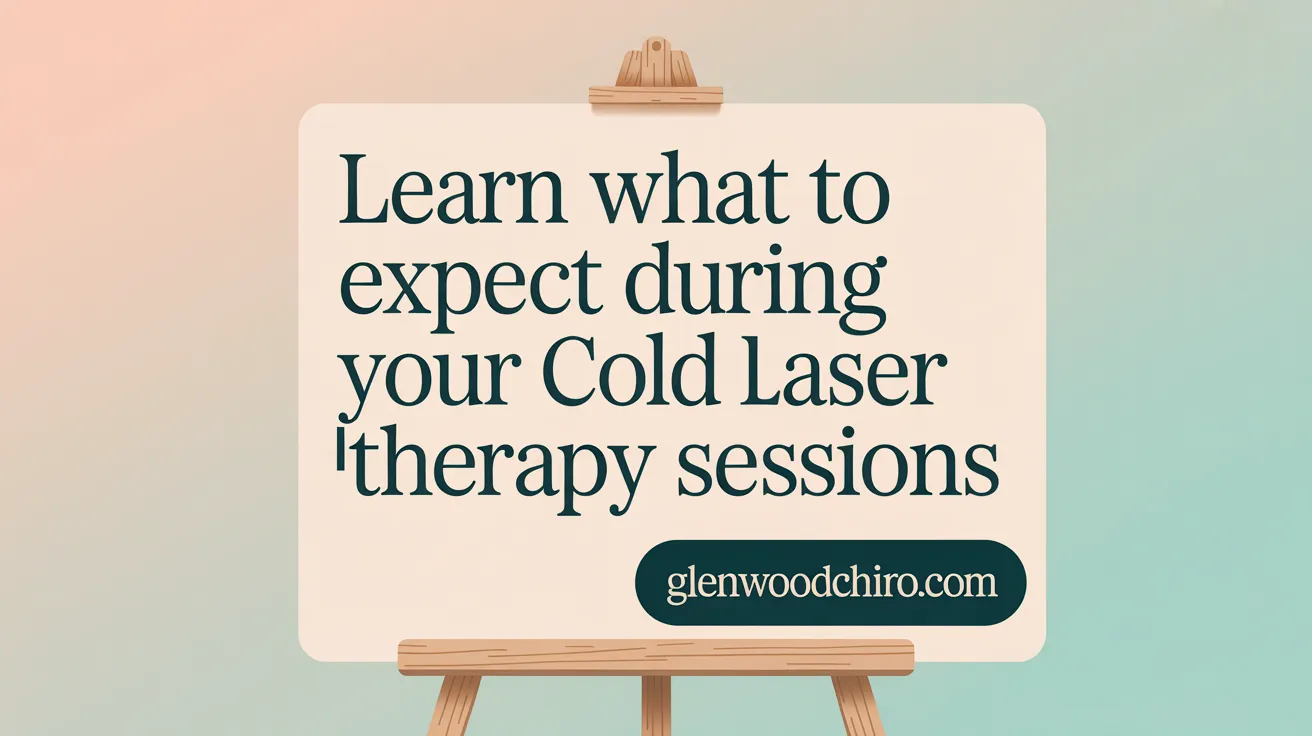Introduction to Cold Laser Therapy in Modern Pain Management
Overview of Cold Laser Therapy
Cold laser therapy, also known as Low-Level Laser Therapy (LLLT), is an advanced treatment modality that uses specific low-intensity laser wavelengths to stimulate healing within targeted body tissues. It works by penetrating the skin and soft tissues to enhance cellular function, particularly by promoting ATP production in mitochondria, which accelerates tissue repair and reduces inflammation.
Non-Invasive Nature of the Treatment
This therapy is completely non-invasive, meaning it requires no incisions, causes no tissue damage or burns, and is painless during administration. Sessions typically last between a few minutes and half an hour, during which patients may experience a soothing warmth but no discomfort. Its non-invasive nature makes it an accessible option for patients aiming to avoid surgery or prolonged recovery times.
General Benefits for Musculoskeletal Conditions
Cold laser therapy is widely used to manage a variety of musculoskeletal conditions such as arthritis, tendonitis, muscle strains, back and neck pain, and nerve-related pain like sciatica and neuropathies. Benefits include reduction of inflammation, stimulation of collagen and blood vessel formation, enhanced cellular regeneration, and improvement of overall tissue function. These effects contribute to pain relief, improved mobility, and faster recovery, making cold laser therapy a valuable component of holistic, patient-centered musculoskeletal care.
How Cold Laser Therapy Works to Relieve Pain and Promote Healing

What is the mechanism by which cold laser therapy reduces pain and promotes healing?
Cold laser therapy operates through the delivery of specific wavelengths of low-intensity light that penetrate skin and underlying tissues without causing heat damage. These wavelengths target the mitochondria within cells, stimulating them to increase production of adenosine triphosphate (ATP) stimulation by laser. ATP serves as cellular energy, enhancing the ability of cells to perform vital repair and regeneration processes.
Beyond boosting cellular energy, cold laser therapy modulates inflammation by downregulating pro-inflammatory agents and promoting the release of Natural Endorphin Production—natural pain-relieving molecules. It also improves local blood circulation, which accelerates tissue healing by delivering oxygen and nutrients while facilitating removal of inflammatory waste products.
Additionally, the therapy stimulates fibroblast activity and collagen synthesis in cold laser therapy. This collagen promotes tissue regeneration and strengthens the extracellular matrix, which aids recovery of ligaments, tendons, and skin integrity. Collectively, these cellular actions translate into reduced pain, decreased inflammation, and enhanced tissue repair, making cold laser therapy a versatile non-invasive treatment for conditions such as arthritis, tendonitis, muscle strains, and neuropathic pain.
Conditions Benefiting from Cold Laser Therapy in Pain Management

Which conditions can cold laser therapy effectively treat?
Cold laser therapy, also known as low-level laser therapy (LLLT), effectively treats a wide array of musculoskeletal conditions. It is beneficial for arthritis, including both osteoarthritis and rheumatoid arthritis, helping to reduce pain and inflammation while promoting tissue repair (Cold Laser Therapy for Arthritis). Tendonitis and bursitis also respond well to this therapy, with reduced swelling and accelerated healing (pain relief with LLLT).
Neuropathic conditions such as carpal tunnel syndrome and sciatica experience symptom relief through enhanced nerve regeneration and inflammation reduction (Cold Laser Therapy for Neurological Conditions). Muscle strains, ligament injuries, and various soft tissue injuries heal more rapidly due to improved cellular activity and increased blood flow stimulated by the cold laser's specific wavelengths (Muscle and Ligament Injury Treatment.
How is cold laser therapy used for chronic and acute pain?
Cold laser therapy is versatile in managing both chronic and acute pain. For chronic issues like persistent neck and back pain or degenerative joint conditions, repeated treatments can progressively decrease pain and improve function (Low-Level Laser Therapy for chronic pain). Acute injuries, including sports-related strains and inflammation, often respond swiftly with noticeable pain reduction and faster recovery times after fewer sessions (Cold Laser Therapy for Faster Recovery).
Integration into chiropractic and physical therapy care plans
Many clinics, including chiropractic and physical therapy centers, incorporate cold laser therapy as part of a comprehensive, non-invasive pain management approach. Combining LLLT with chiropractic adjustments or physiotherapy interventions enhances healing by aligning mechanical correction with cellular regeneration through the integration of cold laser therapy with chiropractic care. This integrated method supports improved mobility, reduced inflammation, and functional restoration without reliance on medication or surgery (Combining Cold Laser and Chiropractic Treatments.
Cold laser therapy works at the cellular level via the mechanism of cold laser therapy including adenosine triphosphate (ATP) stimulation by laser, which aids in cell repair and helps reduce inflammation. Its safety profile and painless procedure make it suitable for diverse patient populations seeking holistic pain relief and rehabilitation (Non-invasive pain treatment).
Advantages of Cold Laser Therapy Compared to Traditional Treatments

What are the advantages of cold laser therapy compared to traditional pain treatments?
Cold Laser Therapy presents several advantages over traditional pain treatments, making it an appealing option for patients seeking effective yet gentle care. Primarily, it is non-invasive and painless, involving no incisions or tissue damage. This means patients do not experience the discomfort or risk associated with surgical procedures, nor do they require downtime or recovery time after treatment.
As a drug-free alternative, cold laser therapy reduces or eliminates the need for opioids and other pain medications, which carry risks such as addiction and side effects. This feature is especially critical amid concerns about opioid overdose and long-term medication dependency.
The therapy boasts minimal side effects, largely because it works by stimulating the body’s natural healing mechanisms at the cellular level. It reduces inflammation, promotes circulation, and accelerates tissue repair without causing burns or tissue damage (Benefits of Cold Laser Therapy, Low-Level Laser Therapy (LLLT).
Importantly, cold laser therapy complements chiropractic adjustments and rehabilitation efforts. When combined with manual therapy techniques, it can accelerate healing post-adjustment, reduce soreness, and improve overall treatment outcomes for musculoskeletal conditions. This integration of cold laser therapy with chiropractic care supports holistic, patient-centered care aimed at restoring function and relieving pain effectively and safely (Cold Laser Therapy Benefits.
Treatment Protocols and Patient Experience in Cold Laser Therapy

Typical Session Duration and Sensations
Cold Laser Therapy at Village Chiropractic sessions are brief, typically lasting between a few minutes and 30 minutes. During the treatment, patients generally experience a gentle, soothing warmth in the targeted area. Importantly, the therapy is painless and non-invasive, with no tissue heating or damage.
Frequency and Number of Sessions for Acute vs Chronic Pain
For acute pain, treatment sessions often occur 2–3 times per week to rapidly manage symptoms. In contrast, patients with chronic conditions commonly receive therapy 1–2 times weekly, with session frequency gradually decreasing as symptoms improve. Optimal treatment often involves 8 to 15 sessions, tailored to the intensity and nature of the patient’s pain and tissue damage.
Personalized Treatment Plans in Clinics
Clinics emphasize individualized care, adjusting treatment duration, frequency, and intensity based on patient response. Cold laser therapy is often integrated with other therapies such as chiropractic adjustments, manual therapies, or rehabilitative exercise to enhance overall musculoskeletal recovery.
Safety Considerations and Contraindications
Cold Laser Therapy is safe when administered properly. Protective measures include avoiding directing laser beams into the eyes and refraining from treatment over known cancerous sites unless for palliative care. It is generally contraindicated over the abdomen during pregnancy and requires caution with epileptic patients due to potential photosensitivity. These safety protocols ensure effective and risk-free treatment.
Integrating Cold Laser Therapy in Holistic Musculoskeletal Care
How is cold laser therapy integrated into holistic musculoskeletal care programs?
Cold laser therapy is seamlessly incorporated into comprehensive musculoskeletal care by combining it with exercise regimens, chiropractic adjustments, and manual therapies such as Active Release Technique and cupping. This multidisciplinary approach optimizes patient outcomes by addressing both structural and cellular levels of healing (Noninvasive treatments for chronic pain.
Chiropractic adjustments help restore proper spinal alignment and nervous system function, while cold laser therapy enhances cellular regeneration and reduces inflammation in muscles, ligaments, and joints. The synergy between these treatments accelerates tissue repair and alleviates pain more effectively than either alone (integration of cold laser therapy with chiropractic care, Cold Laser Therapy at Village Chiropractic.
Additionally, integrating cold laser therapy supports opioid-sparing strategies, offering a safe, drug-free option for managing chronic pain. Patients benefit from reduced reliance on pain medications without sacrificing relief, promoting safer long-term recovery (Benefits of Cold Laser Therapy.
This therapy also contributes significantly to improved mobility and functional recovery. By increasing blood flow, stimulating adenosine triphosphate (ATP) stimulation by laser, and decreasing inflammatory substances, cold laser therapy helps restore range of motion and supports faster rehabilitation following injuries or surgery (Low-Level Laser Therapy (LLLT), Cold Laser Therapy for Musculoskeletal Conditions).
Overall, the incorporation of cold laser therapy into holistic musculoskeletal rehabilitation enhances recovery speed, pain control, and functional outcomes, making it a valuable component of patient-centered care programs (Benefits of Cold Laser Therapy, Cold Laser Therapy for Pain Relief.
The Future of Pain Management with Cold Laser Therapy
Clinical Benefits and Patient Outcomes
Cold laser therapy, also known as Low-Level Laser Therapy (LLLT), offers a range of clinical benefits that support effective pain management. By using non-invasive, low-intensity light, this therapy stimulates cellular repair, promotes tissue healing, and reduces inflammation. Patients suffering from conditions such as arthritis, tendonitis, neuropathic pain, and musculoskeletal disorders report improvements in pain relief, enhanced mobility, and faster recovery times. Studies have demonstrated its effectiveness in reducing pain and disability, particularly for chronic low back pain, joint inflammation, and soft tissue injuries.
Personalized, Non-Invasive Care
One of the strengths of cold laser therapy is its adaptability to individualized patient needs. Treatment plans are tailored based on pain levels, condition severity, and patient response, often involving multiple short sessions without discomfort or downtime. This personalized, non-pharmacological approach integrates well with chiropractic care and other manual therapies, offering drug-free pain relief that avoids potential side effects associated with medications or surgical interventions.
Addressing Chronic Pain Effectively Without Drugs or Surgery
As chronic pain continues to affect millions, cold laser therapy emerges as a promising option to manage pain without reliance on opioids or invasive surgeries. Its ability to stimulate natural pain relief mechanisms—such as endorphin production—and accelerate tissue regeneration positions it as an innovative, holistic treatment. Clinics embracing this technology provide patients with safe, evidence-based alternatives designed for sustainable pain management and improved quality of life.
